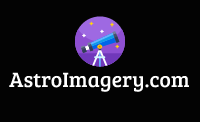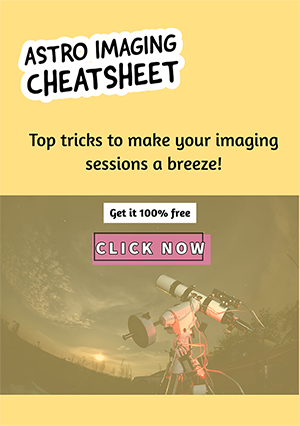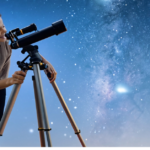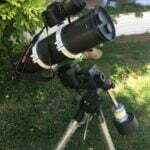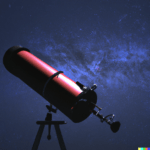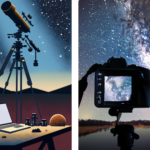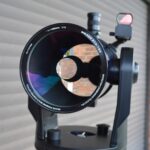Table of Contents
The first step in my astrophotography journey was learning what I could see with a telescope. The fact that I could see galaxies through a small telescope was a revelation, although the reality of what I could see was far less than what I expected. In this post, we will learn how big a telescope you need to see galaxies.
If you’re looking to find out what telescope is best for viewing galaxies, I’ve got the answers for you here.
This post will not only guide you in choosing a telescope for seeing galaxies but will also help you decide what the best telescope is for galaxy astrophotography. Are you interested in not merely seeing galaxies but also photographing them? I sure am, and I have photographed many over the last few years.
When I started with a telescope, I didn’t even know it was possible to take a picture of a galaxy. It is! But what is the best telescope for galaxy astrophotography? I thought I would need a big telescope like the ones in observatories. Not true. Any beginner astronomer with the right equipment can take pictures of galaxies.
It’s not easy to take a picture like the ones I have taken of a distant galaxy with a lot of detail. Remember that some of the most beautiful galaxies are millions of light years away from us! There are tips and methods to use, but most of them come from experience. But as your guide, I can give you the benefit of my experience and hopefully help you understand and improve.
So, let’s get into this and talk about the best telescope for seeing galaxies and for galaxy astrophotography. The size of the required telescope to observe galaxies is a minimum of eight inches, according to Michael Bakich, writing here at astronomy.com. I know that a five-inch diameter is good enough for imaging because I have used one to take pictures of many galaxies successfully. However, a larger diameter is better.
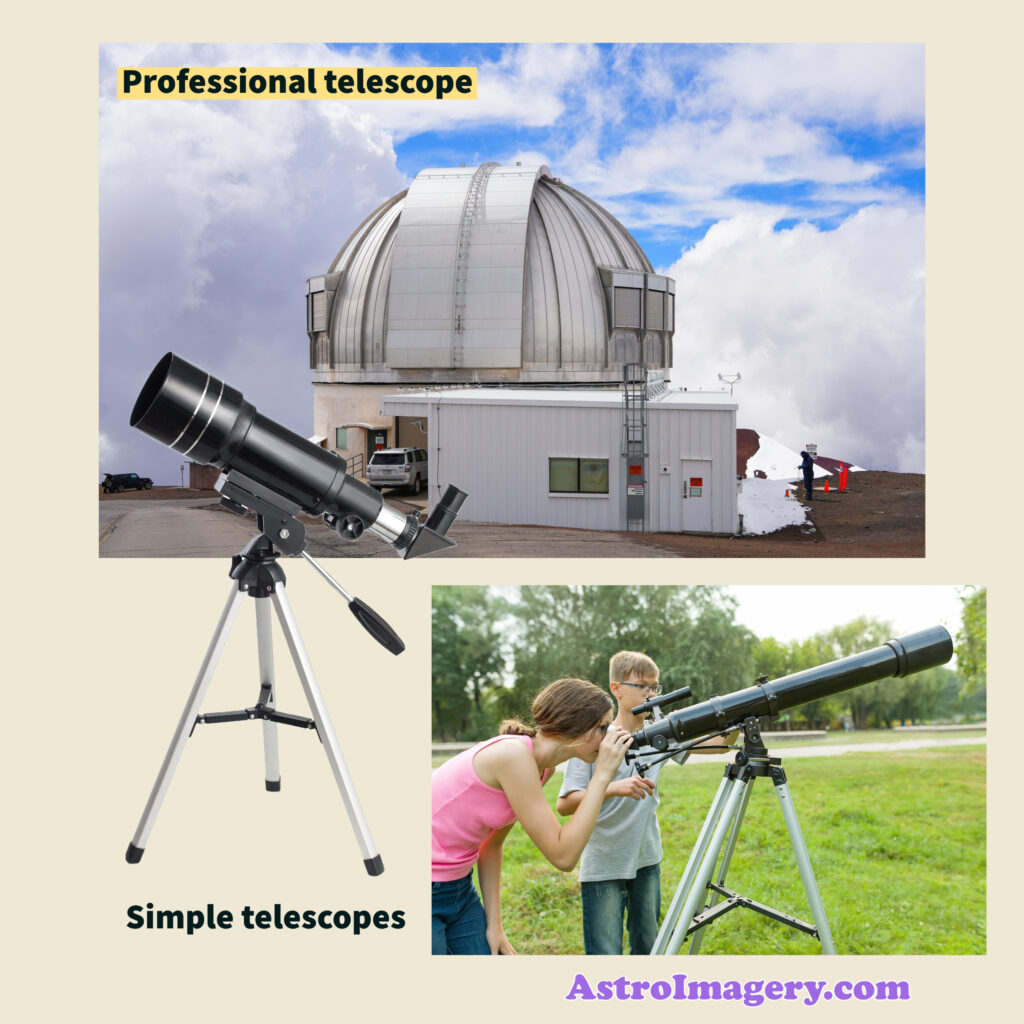
The importance of telescope size for galaxy observation
First, let’s talk about how the size of your telescope affects how you see galaxies. We’ll then try to answer the following question: What is the best telescope to see galaxies?
This website is about astrophotography, which is my specialty. Therefore, we’ll also look at which telescope is best for galaxy astrophotography. We’ll consider how the size of the telescope affects astrophotography, which is when we try to take a picture of a galaxy.
Obviously, the bigger the telescope aperture, the more light it collects and the better detail we see, and this is true for viewing galaxies. Now, galaxies are hard to see through a telescope, especially a small one like the 4 to 6 inches that many amateur astronomers have.
Astrophotography makes it possible to see much more detail in a galaxy due to the longer total exposure time and sensitivity of modern cameras. So, if you find viewing galaxies too challenging, you can try galaxy astrophotography. You’ll be amazed at the results you can get with experience!
With the best telescope for galaxy astrophotography, you can see more detail in the galaxy’s arms and individual parts.
Seeing galaxies through a telescope is much harder because many of them are so far away. You might only be able to see a faint, colourless smudge. According to Astronomy.com, you should use at least an 8-inch telescope to observe galaxies; otherwise, the details will be lacking, and it won’t be worth doing this. In the same article, it says that a 20-inch telescope is needed for serious observation.
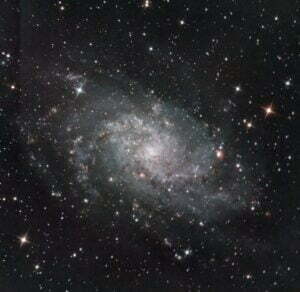
Factors to consider when choosing the best telescope for galaxy astrophotography
Let’s consider astrophotography as opposed to viewing galaxies.
I think that if you want to take pictures of galaxies, you need a telescope that is at least 5 inches across. This is not enough to see galaxies because they are too dim, and you won’t be able to see much detail in the telescope eyepiece. But with many images stacked together and then processed, you should have a good astronomy image.
So what factors are important in choosing the best telescope for galaxy astrophotography?
Here are some of the most essential things that determine how good any model of telescope is for imaging deep-sky astronomy targets such as galaxies:
- Aperture size and its relationship to light-gathering capability
- Magnification and its relationship to image resolution
- Field of view and its relationship to observing large objects, such as galaxies
- How portable and easy to use it is
Aperture size
The diameter of the telescope’s circular opening, in millimetres or inches, is called the aperture. A telescope will receive four times the light of another with half its aperture size. Therefore, an 8-inch telescope will collect four times as much light as a 4-inch one and four times less than a 16-inch one.
The larger the aperture of a telescope, the lower the limiting magnitude of an object that can be seen. But when imaging, more exposure time can be added to make it more likely that fainter targets will be captured. In other words, a bigger telescope will need less imaging time to get the same quality and level of detail in an image.
Please note that in this discussion of the properties of telescope size, we are assuming that the optics have the same properties, which in reality is not completely true, as each model of telescope and optics can vary in quality.
Magnification and image resolution
We don’t always need high magnification for astrophotography, but when objects are very small in the eyepiece, we can magnify them to see the details better.
The problem is that magnifying an image may just make the noise and lack of detail more obvious. I see this all the time when working on my astrophotography in Photoshop. To be able to zoom in on a galaxy and see the fine details the resolution becomes important.
The best telescope for seeing a galaxy would be able to resolve details. Resolution in a telescope is its ability to separate two very close points and make them clear and sharp.
For this reason, you can use high-quality eyepieces to increase magnification while maintaining image resolution. But it is the optics in the telescope which are responsible for its resolution.
Enlarge an image on a computer screen and you will see how low resolution makes a magnified image much worse. In a similar way, using bad telescope optics, like low-quality eyepieces or telescope mirrors and lenses, makes the quality of the image worse.
Field of View
As the aperture size gets bigger, the field of view gets smaller. The best telescope for viewing galaxies would depend on which galaxies you wish to view. I have found that some galaxies such as the Sunflower galaxy or the black eye galaxy are very small in any picture I take with my telescope. If I try to see a galaxy in the eyepiece it will be too small to see much detail.
In astrophotography, I can image a galaxy that looks very small in my telescope and then zoom in and crop the image. Providing I take many hours of images I can get good resolution and less noise so that the galaxy will look good even after it is magnified.
Therefore, depending on which galaxy I wish to see the best telescope would be the one that can get in closer and allow me to see the details. In other words, for smaller galaxies, I need a smaller field of view and for larger galaxies such as the Andromeda galaxy, I need a larger field of view.
Taking a picture of something big, like the Andromeda Galaxy, requires a larger focal length than 650mm to fit the whole galaxy in the frame. I know this because I have photographed it with my telescope and I cannot see the whole galaxy in my image.
This makes it harder to take a picture of something big, like the Andromeda Galaxy, because it won’t fit in the frame. The field of view is just how much of the sky you can see when you use your equipment.
The field of view needs to match the object being imaged, or, as I have done many times, different images can be put together to make a mosaic that shows the whole object. This is what I did when I took pictures of the California Nebula over a few nights. It’s kind of like putting together a jigsaw puzzle!
In astrophotography, the field of view is affected not only by the telescope but also by the camera and anything else you put on it. I have very different FOVs for my DSLR setup (1.97° x 1.31°) and my ASI533 MC PRO, which is considerably less (59.82′ x 59.82′).
If astronomy terms are making you a little confused and you want to know what they mean, I recommend the following site: COSMOS – The SAO Encyclopedia of Astronomy
When considering how good a telescope might be for imaging galaxies, we need to look at the focal length, which will need to be longer in order to capture smaller galaxies, of which there are many.
My equipment has approximately 650mm focal length, and I have to crop the final image to zoom into the galaxy to reveal its details. If I had a telescope with a longer focal length, say 1000mm or even more, I would be able to capture much greater detail.
Therefore, if you are thinking of buying a telescope specifically to photograph these smaller galaxies, go for a longer focal length. You’ll be happy you did!
Portability
This is something you should always think about when buying or upgrading your astrophotography gear, especially your mount or telescope OTA (optical tube assembly). Can you move your heavy equipment from one place to another? How easy is it to take your setup apart and put it back together so you can take it with you?
Before buying new equipment to photograph galaxies or any other astronomy target, you should ask yourself where and how you plan to use your setup. Are you going to look for darker places or just stay in your backyard? Read more about the problems of light pollution and why dark sites are better for astrophotography.
Don’t forget that a mount that can be moved around may be less stable and may not be able to hold as much weight as you might want to add, like a guide scope, finder scope, or other accessories.
I use an Ioptron CEM26 EQ Mount because it is a reliable model and has a good ratio of portability to carrying weight. This makes my setup easy to move from one place to another or to take apart and put back together on site.
The CEM26 I use is an equatorial mount. I would recommend using a good equatorial mount so you can track the movement of the stars and get the very best possible details in your galaxy images. Find out more about how to use an equatorial mount on this page.
The tripod of the mount needs to be sturdy yet not too heavy, or you will not be able to move your mount easily, so this is also something to think about.
On the other hand, don’t use a telescope setup with a mount that is flimsy or that struggles to support the weight of your telescope and other accessories, such as a guide scope.
The stability of your mount will guarantee better photos!
Different Sizes of Reflector Telescopes Compared
Let’s bring this all together and compare the pros and cons of aspects of the best telescope for galaxy astrophotography.
| Size Category | Cost | Portability | Level of Complexity | Efficacy for Galaxy Imaging |
| Small (aperture 2 to 5 inches) | $500 to $1500 | Highly portable | Simple design encourages ease of use for beginners | Limited ability to capture galaxies due to smaller aperture |
| Medium (6 to 8 inches aperture) | $1500 to $5000 | Reasonably mobile, may require a sturdier mount | More features might be a bit complex for beginners but suitable for intermediate level | Better imaging capability and light gathering due to larger aperture |
| Large (aperture of 10 inches or more) | $5000 to $10,000 | May need dedicated space | Complex features require more understanding and experience | Professional quality; great for capturing intricate details of galaxies |
What telescope is best for viewing galaxies? And for astrophotography?
Using a small or medium-sized reflector telescope will probably make it very difficult to see a galaxy. Most small refractors will also be unsuitable. You may see something, but it will be very faint and without much detail. Your eyes will not be able to see such far-away objects as galaxies unless you use a larger telescope of 8 inches or more (for a reflector).
The best telescope for seeing galaxies would include:
- Reflectors with 8-inch or larger aperture
- Refractors with at least 80mm aperture
The best telescope for galaxy astrophotography would include any of the following:
- Small reflector telescopes (with a lens size of up to 4 inches)
- Medium reflector telescopes (4 to 8 inches)
- Large reflector telescopes (8 inches and over)
Reflecting Telescopes
Small telescopes up to 4 inches would include refractors that many amateur astronomers use for astrophotography. Most large telescopes are reflectors because it’s hard to make refractors with optics that are free of flaws.
Reflectors are also popular because they gather a lot of light, which is great for enhancing the details in the images captured.
This telescope is a fantastic choice for viewing galaxies:
Refracting Telescopes
You can use a refractor telescope with at least an 80mm aperture size to see galaxies, but 100mm or even more will be even better.
Because they are easy to use, high-quality refractors are very popular with amateur astronomers and astrophotographers. They don’t require much maintenance or collimation, which reflectors need. I’ve found collimation quite easy to do, so it’s not a problem. Refractors can be quite expensive because the optics are sensitive to distortion (called chromatic aberration in astronomy).
Apochromatic refractors are particularly recommended for the lack of chromatic aberration and the high quality of the images they can help produce.
Here’s a great telescope for viewing galaxies as it has a 90mm aperture:
Telescope Brands
The brand of your telescope makes a huge difference in its quality and price. Think about which brand you prefer and why before you buy.
I’ve written a very helpful guide about the different telescope brands so that you can choose which manufacturer best suits you and what you plan to image or observe with your telescope.
If you’re looking for the best telescope for galaxy astrophotography with good detail and resolution, the list below has you covered. All of these are good scopes for this job.
Popular telescopes for astrophotography
Celestron Nexstar 6SE 150mm Computerised Telescope
- According to a review on Cloudy Nights by Astrojensen, the Celestron Nexstar 6SE is easy to set up and use. The reviewer found the telescope to be impressive for both planetary and deep-sky imaging, with sharp views of galaxies.
- Another review on the T3 website by David Sky Brody praised the Celestron Nexstar 6SE for its exquisite, sharp views of the deep sky, including galaxies. The reviewer found it to be an impressive telescope for serious astronomy.
This telescope is suitable for astrophotography because it has a Goto system:
Conclusion
There is no one type or size of telescope that will let you see or image galaxies.
Many different types of telescopes can be used, and some are better than others in terms of photography or observation.
Some incredible telescopes used for viewing and photographing galaxies include those that see in the infrared frequencies. This is helpful because galaxies contain dust clouds that give off infrared light. These telescopes are beyond what we use as amateurs and cost much more.
The same telescope can give different results depending on where it is used. For seeing galaxies, we need to get away from light pollution. Even when using a powerful telescope, galaxies can be difficult to see in areas where the sky is affected by city lights. No matter the size of your telescope, when viewing or imaging a galaxy, do it from a dark sky. This will allow you to see objects more clearly and also photograph them with less exposure time.
When viewing galaxies, atmospheric disturbance can hide details and make this challenging. One solution is to use a telescope at a higher altitude where there is less atmosphere to look through. The best telescope for viewing or photographing galaxies would be in space where there is no atmospheric turbulence. For astrophotography, we can overcome atmospheric disturbance to some degree by taking many pictures and stacking them to create an averaged-out image. This greatly improves the quality of the final image.
Generally, the bigger the aperture of the telescope, the better! The best galaxy telescopes will have good quality optics including an eyepeice that will enable you to view details clearly.
However, the best telescope for galaxy astrophotography is not necessarily the one that is best for seeing galaxies. Being practical, you’ll need the best telescope for galaxy astrophotography that you can safely handle, given the weight limits of your mount and whether you need a portable setup or not.
By taking a lot of pictures and stacking them, you can make very good pictures of many of the galaxies that people usually photograph and look at. So, if you can’t afford a very large telescope (12 inches or more), just take more pictures with your smaller telescope, and you’ll be amazed at the results.
I wish you success in your astrophotography journey! Please feel free to ask me a question if you’d like to know more about choosing the best telescope for galaxy astrophotography.
